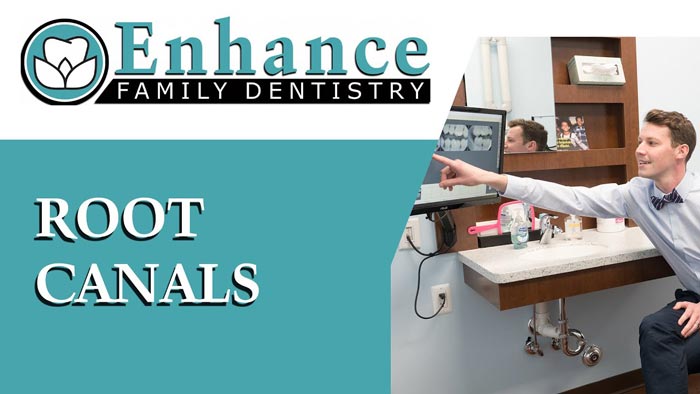You may need a root canal if you have a deep cavity that penetrates the pulp inside your tooth. During this procedure, our dentists in Ann Arbor, MI, remove the infected pulp and nerve in the tooth’s root. Doing this will not only save your tooth but prevent the infection from spreading to your face, jaw, and bloodstream.

It is vital that you receive treatment as soon as possible for an . An infection will NOT go away on its own. The good news is that our office is equipped to handle root canal cases. Also, our dentists and their team have the education, training, and experience to ensure your root canal runs smoothly.
Here’s what you can expect during an emergency root canal.
Examining Your Mouth and Taking X-Rays
First, one of our dentists will thoroughly examine the inside of your mouth. They’ll also take X-rays to get a better look at what’s happening beneath the surface. For example, our dentists will be able to see where the infection is and if it’s spread to the jawbone yet.
If we’ve determined that the tooth is infected, we’ll begin to prep you for the root canal procedure.
Related:What Is Considered a Dental Emergency? →
Managing Pain With Local Anesthetic
Your comfort is our priority. One of the first things we’ll do is inject a local anesthetic to numb the abscessed tooth and surrounding tissue. This is done to ensure you don’t feel any pain or discomfort during root canal treatment.
Prepping the Tooth
Once you’re properly numb, the dentist will carefully position a dental dam around the tooth. This rubber protective sheet will isolate the tooth from the rest of your mouth so it’s kept clean and dry.
Removing the Infected Dental Pulp
Once you’re properly numb, we’ll drill a small hole in the crown of the tooth. (The crown is the visible portion of the tooth above the gum line.) Through this hole, the dentist will insert small instruments to clean and shape the inside of your tooth. This includes the innermost pulp chamber and the tooth roots.
Filling and Sealing the Tooth
We use a biocompatible material called gutta-percha to fill the inside of your tooth once it’s been cleaned and shaped. We also use adhesive cement with the gutta-percha to seal the tooth roots. As a final step, we seal the tooth with a temporary filling.
Placing the Permanent Dental Crown
We’ll need to take dental impressions to send to the lab where your permanent dental crown will be made. Once we have those impressions, our dentists will give you aftercare instructions so you know how to take care of your mouth at home while you heal.
When you return for your second appointment, your permanent dental crown will be ready. One of our dentists will then replace your temporary filling with the permanent restoration.
A dental crown is essentially a tooth-shaped cap that restores your tooth’s natural strength and appearance. Once the dentist is satisfied with the way the crown looks and fits, they’ll bond it onto your tooth.
Practicing Good Oral Hygiene After a Root Canal
Continue to practice good oral hygiene after your appointments for root canal therapy. This includes brushing your teeth twice a day for at least two minutes at a time. You should also floss once daily to remove any plaque or food particles caught between teeth. A fluoride mouth rinse can also help strengthen your enamel, making it more resistant to acid attacks from plaque that can cause cavities.
Book a Consultation for Root Canal Therapy
Do you still have questions about what you can expect during ? Don’t wait until you’re in unbearable pain before seeking emergency dental care. Our dentists in Ann Arbor, MI, will be able to diagnose and treat the source of your pain so you can restore your oral health. To request an appointment, call Enhance Dental at (734) 821-7676 or fill out our online contact form.
This blog post has been updated.


